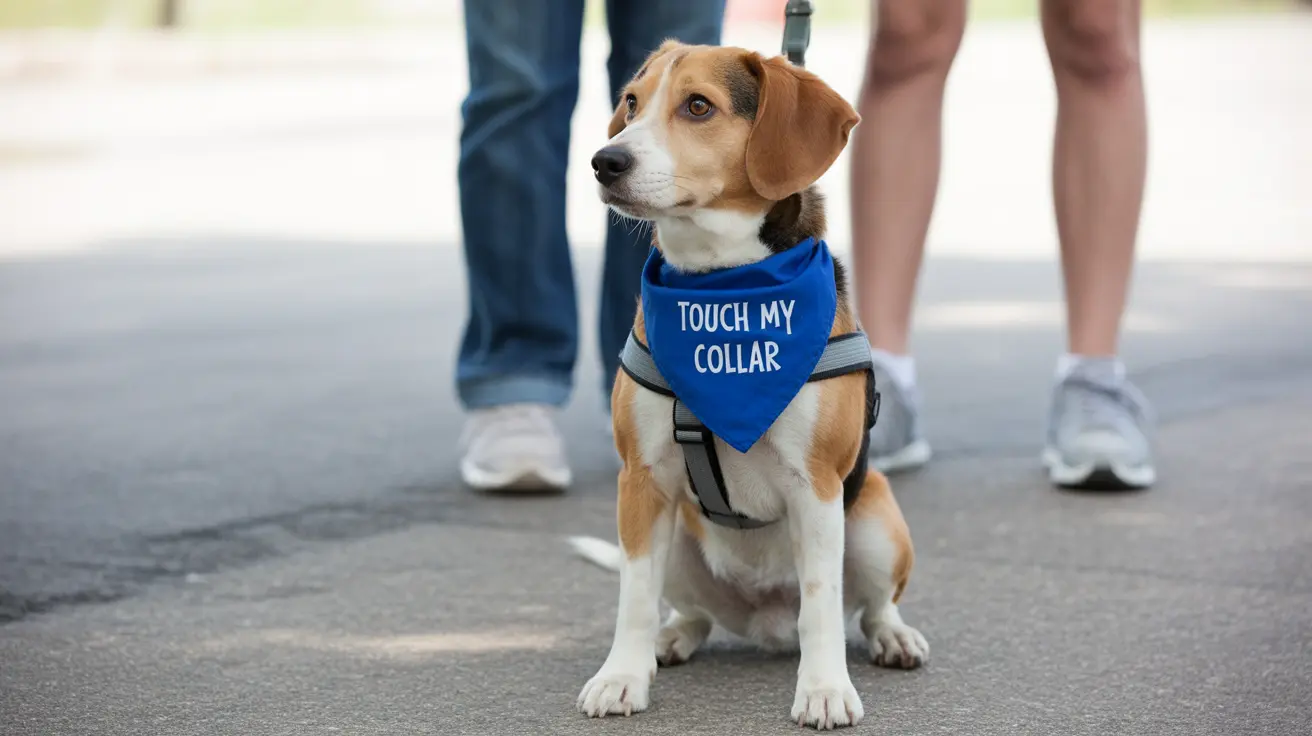Complete Guide to Dementia in Dogs and Cats Management: Recognition, Treatment, and Care Strategies
As our beloved pets age, many owners notice subtle changes in their furry companions' behavior that can be concerning. What may initially appear as typical aging could actually be signs of cognitive dysfunction, commonly known as dementia in dogs and cats. This progressive brain condition affects a significant number of senior pets, with studies showing that approximately 28% of dogs aged 11-12 and an alarming 68% of dogs aged 15-16 display signs of cognitive decline.
Understanding dementia in dogs and cats management is crucial for pet owners who want to provide the best possible care for their aging companions. Similar to Alzheimer's disease in humans, pet dementia results from age-related brain damage, including the buildup of beta-amyloid plaques and neuron dysfunction. This comprehensive guide will help you recognize early warning signs, understand treatment options, and implement effective management strategies to maintain your pet's quality of life throughout their golden years.
While there is currently no cure for pet dementia, early recognition and proper management can significantly slow the progression of symptoms and help your furry friend maintain comfort and dignity. By learning to identify the signs and working closely with your veterinarian, you can create a supportive environment that addresses both the physical and emotional needs of pets with cognitive dysfunction.
Understanding Pet Dementia: What Happens in Your Pet's Brain
Pet dementia, scientifically known as canine cognitive dysfunction (CCD) in dogs, is a progressive neurological condition that mirrors many aspects of Alzheimer's disease in humans. The condition develops as a result of age-related deterioration in brain structure and function, leading to the accumulation of harmful proteins and the gradual loss of healthy neurons.
The pathophysiology of dementia in pets involves several key mechanisms. Beta-amyloid plaques, which are protein deposits that interfere with normal brain cell communication, begin to accumulate in the brain tissue. Simultaneously, neurons start to malfunction and die, disrupting the normal pathways responsible for memory, learning, and spatial awareness. This degenerative process occurs gradually, which is why symptoms often develop slowly and may be mistaken for normal aging behaviors.
What makes pet dementia particularly challenging is that it affects multiple areas of cognitive function simultaneously. Unlike a specific medical condition that might target one system, dementia impacts memory formation, problem-solving abilities, recognition of familiar people and places, and even basic survival instincts like house training and sleep patterns.
Recognizing Early Signs: Differentiating Dementia from Normal Aging
One of the most critical aspects of dementia in dogs and cats management is learning to distinguish between normal age-related changes and concerning symptoms that warrant veterinary attention. While some slowing down is expected as pets age, certain behavioral changes should raise red flags for pet owners.
Disorientation and Spatial Confusion
Dogs and cats with dementia often display significant disorientation that goes beyond typical senior moments. Affected pets may get lost in familiar environments, such as their own home or yard, or become stuck in corners and seem unable to navigate around furniture they've maneuvered around for years. This spatial confusion is one of the hallmark signs of cognitive dysfunction and typically worsens over time.
Changes in Social Interactions
Dementia can dramatically alter how pets interact with their human families and other animals. Some pets become unusually clingy, following their owners constantly and showing increased dependency. Conversely, others may become withdrawn, irritable, or even aggressive toward family members they previously adored. These social changes often cause significant distress for pet owners who struggle to understand their companion's altered behavior.
Sleep-Wake Cycle Disruptions
Healthy senior pets may sleep more during the day but typically maintain relatively normal nighttime rest patterns. Pets with dementia, however, often experience severe disruptions in their sleep-wake cycles. This may manifest as increased restlessness and vocalization during nighttime hours, a condition known as sundowner syndrome. Affected animals may pace, vocalize excessively, or seem anxious when darkness falls.
Comprehensive Symptom Recognition Guide
Understanding the full spectrum of dementia symptoms helps pet owners provide more detailed information to their veterinarians and implement appropriate management strategies. The symptoms of cognitive dysfunction can be grouped into several categories, each requiring different approaches to management.
Memory and Learning Difficulties
Pets with dementia often struggle with memory formation and recall. Dogs may forget familiar commands they've known for years, fail to recognize family members temporarily, or seem unable to learn new routines. This forgetfulness extends beyond simple training issues and represents a genuine inability to process and retain information as they once did.
House Training Regression
Loss of house training is one of the most distressing symptoms for both pets and their owners. Previously well-trained animals may begin soiling indoors, not because of defiance or medical issues, but because they genuinely forget their training or become confused about appropriate elimination locations. This symptom often leads to frustration and can strain the human-animal bond if not properly understood.
Activity Level Changes
Dementia can cause significant alterations in activity levels, though these changes can manifest in opposite ways. Some pets become increasingly restless and may pace aimlessly or appear unable to settle. Others may become more lethargic than typical aging would suggest, showing little interest in activities they previously enjoyed. Both extremes can indicate cognitive dysfunction when they represent marked changes from the pet's baseline behavior.
Anxiety and Behavioral Changes
Increased anxiety is extremely common in pets with dementia, likely resulting from their confusion and disorientation. This anxiety may manifest as excessive vocalization, especially in cats, destructive behavior, or increased attention-seeking. Pets may also develop new fears or phobias, becoming startled by previously familiar sounds or situations.
Professional Diagnosis and Veterinary Assessment
Proper diagnosis of dementia in dogs and cats requires a comprehensive veterinary evaluation, as many other medical conditions can mimic cognitive dysfunction symptoms. The diagnostic process typically involves both behavioral assessment and medical testing to rule out other potential causes of the observed changes.
Veterinarians use clinical evaluation methods to assess cognitive function, often employing tools like the Canine Dementia Scale (CADES) to systematically evaluate and score the severity of symptoms. This standardized approach helps track progression over time and guide treatment decisions.
The diagnostic process also requires ruling out other medical conditions that could cause similar symptoms. Liver or kidney disease, infections, brain tumors, and other health issues can all produce behavioral changes that might be mistaken for dementia. Comprehensive blood tests, urinalysis, and sometimes imaging studies help veterinarians differentiate between cognitive dysfunction and other medical problems.
Treatment Approaches: Medications and Medical Management
While there is no cure for pet dementia, several medical interventions can help manage symptoms and potentially slow the progression of cognitive decline. The most commonly prescribed medication for dementia in dogs and cats management is selegiline, a drug that helps improve brain function and can reduce symptoms related to cognitive dysfunction.
Selegiline works by increasing the availability of certain neurotransmitters in the brain, particularly dopamine, which plays a crucial role in cognitive function and motor control. However, pet owners should be aware that this medication can interact with certain other drugs, making veterinary supervision essential for safe administration.
Beyond medication, veterinarians may recommend additional medical support depending on the individual pet's needs and concurrent health conditions. Regular monitoring and adjustment of treatment plans help ensure that pets receive optimal care as their condition evolves.
Nutritional Support and Dietary Interventions
Nutrition plays a crucial role in supporting brain health and may help slow the progression of cognitive decline in aging pets. Several specific nutrients and dietary components have shown promise in supporting cognitive function and overall neurological health.
Brain-Supporting Nutrients
Antioxidants are particularly important for pets with cognitive dysfunction, as they help combat the oxidative stress that contributes to brain cell damage. Vitamins E and C, along with other antioxidant compounds, may help protect neurons from further deterioration. Omega-3 fatty acids, especially DHA (docosahexaenoic acid), are essential for maintaining healthy brain tissue and supporting cognitive function.
Coenzyme Q and medium-chain triglycerides (MCTs) represent additional nutritional tools that may benefit pets with dementia. MCTs can provide an alternative energy source for brain cells, potentially improving cognitive function when glucose metabolism is impaired.
Specialized Veterinary Diets
Several veterinary therapeutic diets have been specifically formulated to support cognitive function in aging pets. These diets typically contain optimal levels of brain-supporting nutrients and may include additional compounds designed to promote neurological health. Working with a veterinarian to select the most appropriate diet ensures that pets receive proper nutrition while addressing their specific cognitive needs.
Environmental Modifications for Cognitive Support
Creating a supportive environment is a cornerstone of effective dementia in dogs and cats management. Simple modifications to the home environment can significantly reduce confusion and anxiety while promoting safety and comfort for cognitively impaired pets.
Lighting and Space Management
Providing adequate lighting throughout the home, especially during evening hours, helps reduce disorientation and anxiety associated with sundowner syndrome. Night lights in hallways and sleeping areas can help pets navigate safely during nighttime hours when confusion is often most pronounced.
Creating safe, small spaces where pets can retreat when feeling overwhelmed helps reduce anxiety and provides security. These areas should be easily accessible and free from obstacles that might cause confusion or injury.
Minimizing Environmental Changes
Consistency is crucial for pets with cognitive dysfunction. Avoiding unnecessary changes to furniture arrangement, feeding locations, or daily routines helps reduce confusion and anxiety. When changes are unavoidable, introducing them gradually and providing extra support during the transition period helps pets adapt more successfully.
Behavioral Enrichment and Mental Stimulation
Maintaining mental stimulation is essential for pets with dementia, as appropriate cognitive challenges can help preserve existing function and potentially slow decline. However, enrichment activities must be carefully selected to provide stimulation without causing overwhelming confusion.
Exercise and Physical Activity
Regular, gentle exercise remains important for pets with cognitive dysfunction, though the intensity and duration may need adjustment. Slow walks in familiar areas provide both physical benefits and mental stimulation through sensory experiences. The key is maintaining consistency in routes and timing to minimize confusion while providing beneficial activity.
Cognitive Exercises
Simple cognitive exercises can help maintain mental function without causing frustration. Treat puzzles, scent work, and basic training exercises adapted to the pet's current cognitive level can provide appropriate mental stimulation. The goal is to challenge the pet just enough to engage their mind without creating stress or confusion.
Managing Anxiety and Behavioral Support
Addressing anxiety is a critical component of comprehensive dementia care, as cognitive dysfunction often leads to increased stress and behavioral changes. Several approaches can help reduce anxiety and improve overall quality of life for affected pets.
Calming Aids and Environmental Support
Pheromone diffusers, calming collars, and pressure wraps can provide natural anxiety relief for pets with dementia. These tools work by either replicating natural calming signals or providing gentle, consistent pressure that promotes relaxation. Many pet owners find these non-pharmaceutical approaches helpful as part of a comprehensive management strategy.
Routine and Predictability
Establishing and maintaining consistent daily routines helps reduce anxiety by providing predictability in an increasingly confusing world. Feeding times, exercise periods, and sleep schedules should remain as consistent as possible, with any necessary changes introduced gradually and with extra support.
Special Considerations for Cats with Dementia
While much of the research on pet dementia has focused on dogs, cats also experience cognitive dysfunction, often with some unique manifestations. Excessive vocalization is particularly common in cats with dementia and can be especially distressing for both the cat and their human family.
Cats with cognitive dysfunction may also show increased hiding behavior, changes in litter box habits, or altered relationships with other household pets. Environmental enrichment for cats should focus on maintaining familiar scents, providing multiple easily accessible resources, and ensuring that climbing and perching opportunities remain safe and accessible.
Supporting Pet Owners: Emotional Care and Coping Strategies
Caring for a pet with dementia can be emotionally challenging for owners, who must watch their beloved companion's cognitive abilities decline while providing increasing levels of care and support. Understanding that these feelings are normal and seeking appropriate support helps ensure that both pet and owner can maintain the best possible quality of life.
Support groups, either in-person or online, can provide valuable connections with other pet owners facing similar challenges. Veterinary social workers and counselors who specialize in pet loss and chronic illness can also provide professional support during this difficult time.
Long-term Prognosis and Quality of Life Considerations
Pet dementia is a progressive condition, meaning that symptoms will typically worsen over time despite the best management efforts. However, with appropriate care and early intervention, many pets can maintain a good quality of life for months or even years after diagnosis.
The key to successful long-term management lies in setting realistic expectations, maintaining regular veterinary monitoring, and being willing to adjust care strategies as the condition progresses. Quality of life assessments should be conducted regularly, focusing on the pet's ability to enjoy daily activities, maintain social connections, and remain comfortable.
Frequently Asked Questions
- How early can dementia symptoms appear in pets?
Dementia symptoms can begin appearing in dogs as early as age 7-8, though they're more common in pets over 11 years old. Early signs are often subtle and may be mistaken for normal aging, making regular veterinary check-ups important for senior pets.
- Can dementia in pets be prevented?
While there's no guaranteed way to prevent pet dementia, maintaining a healthy lifestyle with regular exercise, mental stimulation, proper nutrition, and prompt treatment of other health conditions may help reduce risk or delay onset of cognitive dysfunction.
- What's the difference between normal aging and dementia in pets?
Normal aging may involve some slowing down and minor changes in routine, while dementia involves significant disorientation, loss of house training, dramatic behavioral changes, and inability to recognize familiar people or places. If you're unsure, consult your veterinarian for evaluation.
- Are certain breeds more prone to developing dementia?
While any dog or cat can develop dementia, some studies suggest that smaller dog breeds and certain genetic lines may have higher risk. However, age remains the most significant risk factor regardless of breed.
- How long can pets live with dementia?
With proper management, pets with dementia can live for months to several years after diagnosis, depending on the severity at diagnosis and how well they respond to treatment. The focus should be on maintaining quality of life rather than longevity alone.
- Should I consider euthanasia for a pet with severe dementia?
This is a deeply personal decision that should be made in consultation with your veterinarian. Factors to consider include the pet's overall quality of life, ability to enjoy daily activities, level of distress, and response to management strategies. There's no right or wrong answer, only what's best for your individual pet.
- Can supplements really help pets with dementia?
Certain supplements, including omega-3 fatty acids, antioxidants, and medium-chain triglycerides, may support brain health and cognitive function. However, always consult with your veterinarian before starting any supplements, as they can interact with medications and may not be appropriate for all pets.
Conclusion
Dementia in dogs and cats management requires a comprehensive, compassionate approach that addresses both the physical symptoms and emotional needs of affected pets and their families. While cognitive dysfunction can be heartbreaking to witness, understanding the condition and implementing appropriate management strategies can significantly improve quality of life for aging pets.
The key to successful management lies in early recognition, proper veterinary care, environmental modifications, and ongoing support for both pets and their human companions. By working closely with veterinary professionals and maintaining realistic expectations, pet owners can help their beloved companions navigate this challenging condition with dignity and comfort. Remember that while dementia is progressive, many pets continue to experience joy and maintain meaningful relationships with their families throughout their journey with cognitive dysfunction.






